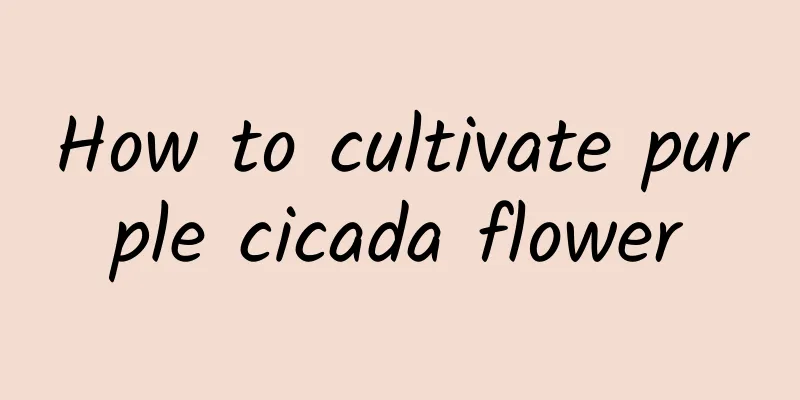What is the reason for the withered leaves of clematis (Why are the leaves of clematis curled up)

|
Clematis has become a popular flower in recent years, and its price has gradually become cheaper. Many people will grow one or more pots of it at home. Because their flowers are very beautiful, some have single petals, some have double petals, and even some have blue colors that we don't see often, so this plant is very good to keep at home. It has large and colorful flowers, which are very beautiful. However, many flower lovers cultivate and maintain Clematis carefully, but they just can't grow it well. Either it grows thin or the leaves often curl. 1. Improper wateringThe soil we use to grow clematis is usually relatively breathable and water-permeable. Try not to use a pot that is too large, and make sure to control watering well. If your room is not ventilated and you water the soil in the pot frequently, and you water it directly before the soil is dry, it will cause its roots to rot, and root rot will inevitably cause the leaves to curl and dry up. If we forget to water the clematis we grow, the roots will dry out and the leaves will also dry out. Therefore, when growing clematis, you must master the watering method. Generally, just dig down the soil in the pot to make it dry one or two centimeters and then water it thoroughly . In this way, the roots will not dry out or rot, and the leaves will not curl or dry up. 2. Fertilizer damage causes leaf curlingFor example, if we fertilize clematis too frequently or the concentration of fertilizer is too high, it may cause root burn. For example, if the concentration of fertilizer we use is too high and we spray it directly onto the leaves, it will cause the leaves to dry and curl. When growing clematis, you must control the fertilization well. Its roots are very thick, not capillary roots. When we fertilize, we need to lower the concentration and fertilize it 2 to 3 times a month, which is enough. When spraying the leaves, the concentration should be lowered and do not spray frequently. This will ensure adequate nutrient supply and avoid root or leaf burns. 3. Curl caused by insect pestsWe keep it indoors with poor ventilation, so insects often appear on its leaves, such as aphids and red spiders that we know . These insects are relatively small. They attach to the leaves and suck the water and nutrients from the leaves, causing the leaves to curl. If you don't notice, the leaves will dry up over time. So if you find this situation, check the back of the leaves in time to see if there are insects. If insects are found and pesticides are applied in time, they can be killed completely and leaf curling will not occur again. 4. Caused by excessive lightIf the clematis we raise is a newly bought seedling, the seedling is relatively small and changing the pot will damage the roots a little. If it is placed directly under the sun after planting, its leaves will curl and dry up. If the clematis seedlings we grow are relatively small, put them directly in the sun. Its root system is not very strong, and it cannot withstand too strong light. This results in increased transpiration from the leaves, which consumes more water and nutrients. The root system is relatively weak, and the absorbed water cannot meet the volatilization of the entire branches and leaves. Therefore, it is best to place the seedlings in a place with relatively weak light, so that the leaves will not curl and dry up. 【 Summarize 】 There are only four main reasons for this situation on the leaves of Clematis. You can analyze it appropriately based on your maintenance conditions. For normal maintenance, keep it in sunlight and ensure good ventilation. According to the principle of watering, dig out the soil to remove one or two centimeters, and water it thoroughly in time. Use fertilizer regularly and quantitatively, and use multi-element fertilizer during the growing season. When it blooms, use potassium dihydrogen phosphate or Huaduoduo No. 2. Supplementing with these high-phosphorus fertilizers can allow the flowers to bloom completely at once, bursting the pot directly, which is very spectacular. |
<<: What does horsetail garlic look like (how to remedy and prevent horsetail garlic)
>>: How many bolls does a cotton plant produce (how to grow more bolls per cotton plant)
Recommend
How to grow caterpillars to make them bloom quickly and abundantly (how to grow caterpillars to make them bloom quickly and abundantly)
Growth habits of caterpillar fairy finger Sandalw...
What to do after the lotus seeds germinate
What should I do if the seeds germinate? It's...
Three methods of applying basal fertilizer. Which fertilizers can be used as basal fertilizer?
The role of basal fertilizer Basal fertilizer is ...
Tulip blooming season
1. Flowering time Tulips bloom from March to May,...
How to grow Helleborus in winter and how low of a temperature can it withstand
1. How to keep it in winter 1. See more sunlight:...
How to prune peony potted plants
When to prune peonies Peony potted plants need to...
Winter vegetable varieties picture What vegetables are grown in winter
Winter vegetables are mainly vegetables with shor...
What is the best fertilizer for money tree?
Money tree fertilization time Money tree is a fer...
How to grow copper coin grass
1. Breeding environment 1. Soil: It does not have...
What are the cultivation methods and precautions of Ball Orchid?
How to grow Hoya Hoya likes warm, humid, semi-sha...
How to prune Desert Rose
1. Pruning time The time for pruning is generally...
Feed the flowers some golden water, and they will be like taking stimulants, and they will bloom into big flower balls during the New Year!
Bury an egg yolk and flower buds will pop up! Dur...
What vegetables to plant in February
1. What dishes Vegetables that can be planted at ...
Taboos of drinking dandelion water, the role of dandelion
1. Taboos of drinking soaked water 1. Avoid low b...
The correct method of cultivating Phoenix bamboo
Phoenix tail bamboo is also called rice bamboo an...









